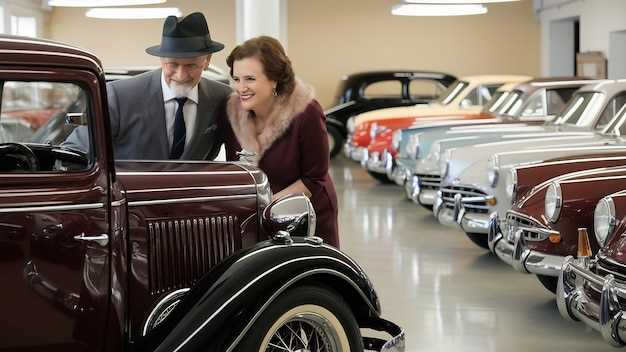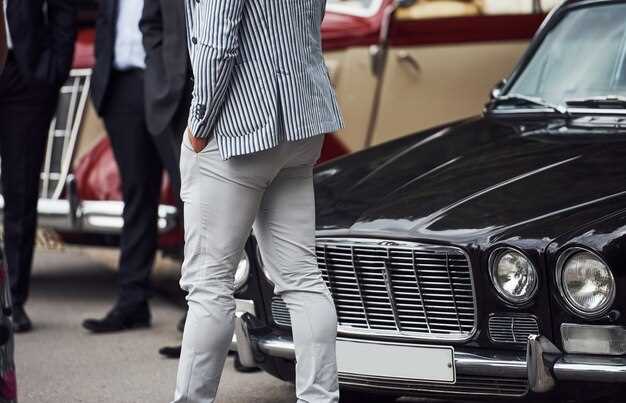
Creating a local classic car club offers a unique opportunity to bring together car enthusiasts who share a passion for vintage automobiles. This community not only serves as a platform for exchanging knowledge and experiences but also fosters lasting friendships among members who appreciate the finer details of classic cars. Whether you own a classic car or simply admire them, establishing a club can enhance your enjoyment of this remarkable hobby.
To successfully launch a classic car club, it’s essential to outline a clear vision and objectives that resonate with potential members. Begin by identifying the interests and motivations of the community you wish to engage. A club focused on organizing meetings, workshops, and drives will appeal to those who cherish hands-on experiences, while others may be drawn to social events or educational seminars centered around classic cars.
Once the foundational goals are established, the next step involves promoting the club to attract members. Utilize social media platforms, local bulletin boards, and even car shows to spread the word. Building an inclusive and welcoming environment will encourage participation and help cultivate a vibrant community centered around a shared love for classic vehicles.
Finding Members and Building Community Engagement

Starting a local classic car club thrives on the active involvement of passionate members who share a love for vintage automobiles. To find these enthusiasts, begin by promoting your club through local car shows, auto repair shops, and community events. Use social media platforms to create dedicated pages or groups where car lovers can connect and learn more about your club.
Another effective strategy is to collaborate with existing car enthusiasts’ networks or local dealerships. This partnership can help you tap into their customer base, reaching potential members who may be interested in joining a club dedicated to classic cars.
Once you’ve attracted initial members, fostering community engagement is crucial. Organize regular meetings, events, and outings to create opportunities for members to bond. Activities like car rallies, restoration workshops, or even technical sessions can keep members excited and connected. Consider inviting guest speakers who are experts in classic car maintenance or history to add value to your meetings.
Encourage members to share their car stories and experiences. This not only builds camaraderie but also nurtures a sense of belonging among club members. Utilize newsletters or social media updates to spotlight individual members and their vehicles, creating an inclusive environment.
Utilizing surveys or feedback forms can help you understand what activities and events members are interested in. This will ensure that your club remains relevant to its members’ interests, ultimately leading to higher engagement levels.
In conclusion, the key to a successful local classic car club lies in effective outreach and ongoing community engagement. By actively involving members and promoting shared interests and experiences, your club can flourish and become a vibrant community for all classic car enthusiasts.
Planning Club Activities and Events

Creating exciting and engaging activities is essential for the success of your classic car club. Start by establishing the preferences and interests of your members through surveys or informal discussions. This will help tailor events that foster participation and enthusiasm.
Consider organizing regular car meet-ups, where members can showcase their vehicles, share stories, and discuss restoration techniques. These gatherings not only strengthen community bonds but also provide opportunities for knowledge exchange among classic car enthusiasts.
Collaborating with local auto shows or classic car exhibitions can be an effective way to elevate your club’s visibility. Participating as a group at such events allows members to present their cars to a broader audience, attracting potential new club members.
Beneath the surface-level meets, think about planning educational workshops. These can focus on topics like maintenance tips, history of classic cars, or even DIY restoration projects. This approach builds skills while enhancing the overall appreciation for classic automobiles.
Exciting road trips to scenic destinations or significant automotive landmarks can also boost camaraderie among members. Plan these excursions carefully, considering the routes, stops, and necessary accommodations. Sharing experiences on the road can create lasting memories and strengthen friendships.
Don’t forget about charity events or community service. Organizing events that combine classic cars with good causes can enrich your club’s reputation, foster a sense of teamwork, and make a positive impact on the local community.
Lastly, be sure to document these activities through photos and newsletters. Regular updates keep members engaged and inform others about what the club is doing, enticing them to join. Thoughtful planning and execution of these events will lead to sustained interest and growth within your classic car club.
Organizing Club Structure and Leadership Roles
Establishing a clear organizational structure is essential for any classic car club to thrive. An effective setup not only promotes member engagement but also ensures smooth operational management.
1. Club President: The club president plays a pivotal role in leading the organization. Responsibilities include organizing meetings, representing the club at events, and setting overall club goals. The president should have strong leadership skills and a passion for classic cars.
2. Vice President: The vice president supports the president and often takes on leadership tasks when the president is unavailable. This role is crucial for continuity and can include overseeing specific projects or initiatives within the club.
3. Secretary: The secretary manages documentation and communication. This role includes taking meeting minutes, maintaining membership records, and handling correspondence. A well-organized secretary ensures all members are informed of upcoming events and activities.
4. Treasurer: A treasurer is responsible for managing the club’s finances. This includes budgeting for events, keeping track of memberships dues, and ensuring financial transparency. Proper financial management is vital for the sustainability of the car club.
5. Events Coordinator: This role focuses on planning and executing events such as car shows, meetups, and community outreach. The events coordinator ensures that gatherings are enjoyable and align with the interests of club members.
6. Membership Chair: The membership chair is tasked with recruiting new members and maintaining relationships with current members. Building a vibrant community around the club is key, and the membership chair plays an active role in fostering engagement and inclusivity.
By defining these leadership roles, a classic car club can operate efficiently and effectively. Each position contributes to a sense of community, helping to share the passion for classic cars among enthusiasts.



